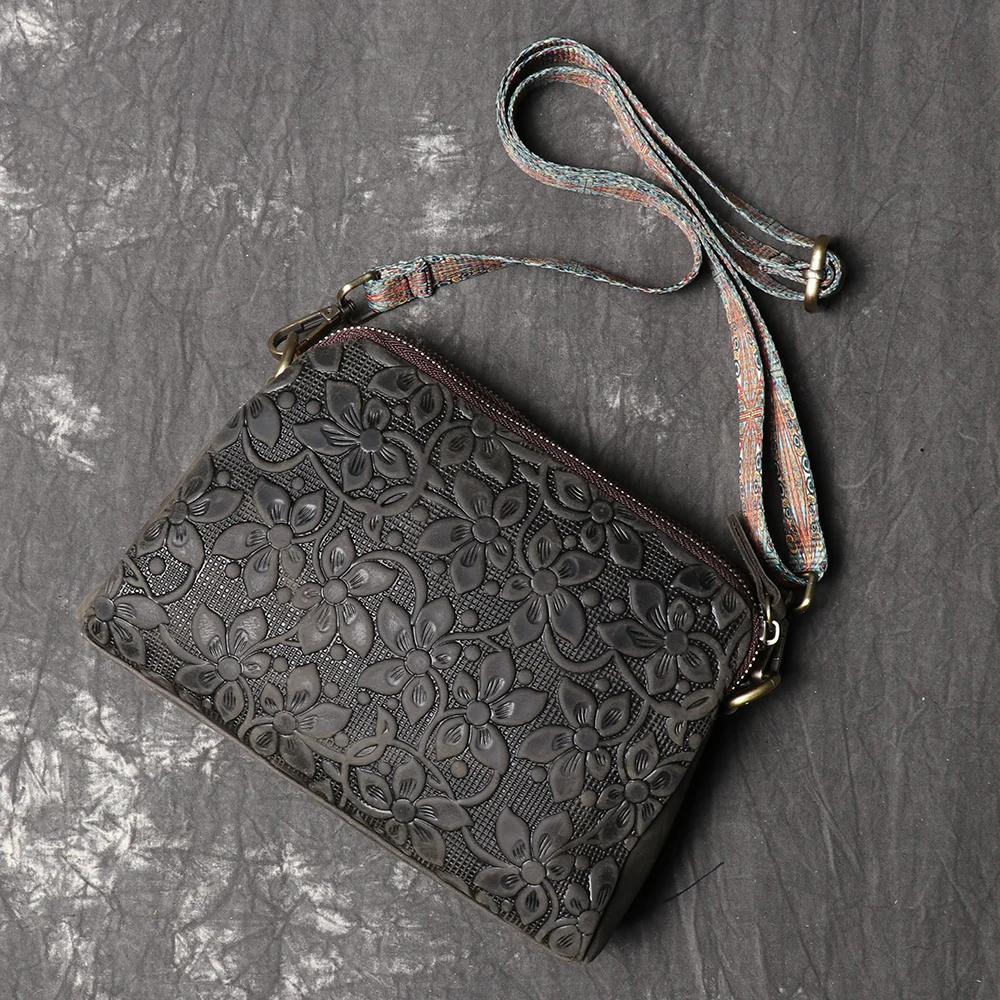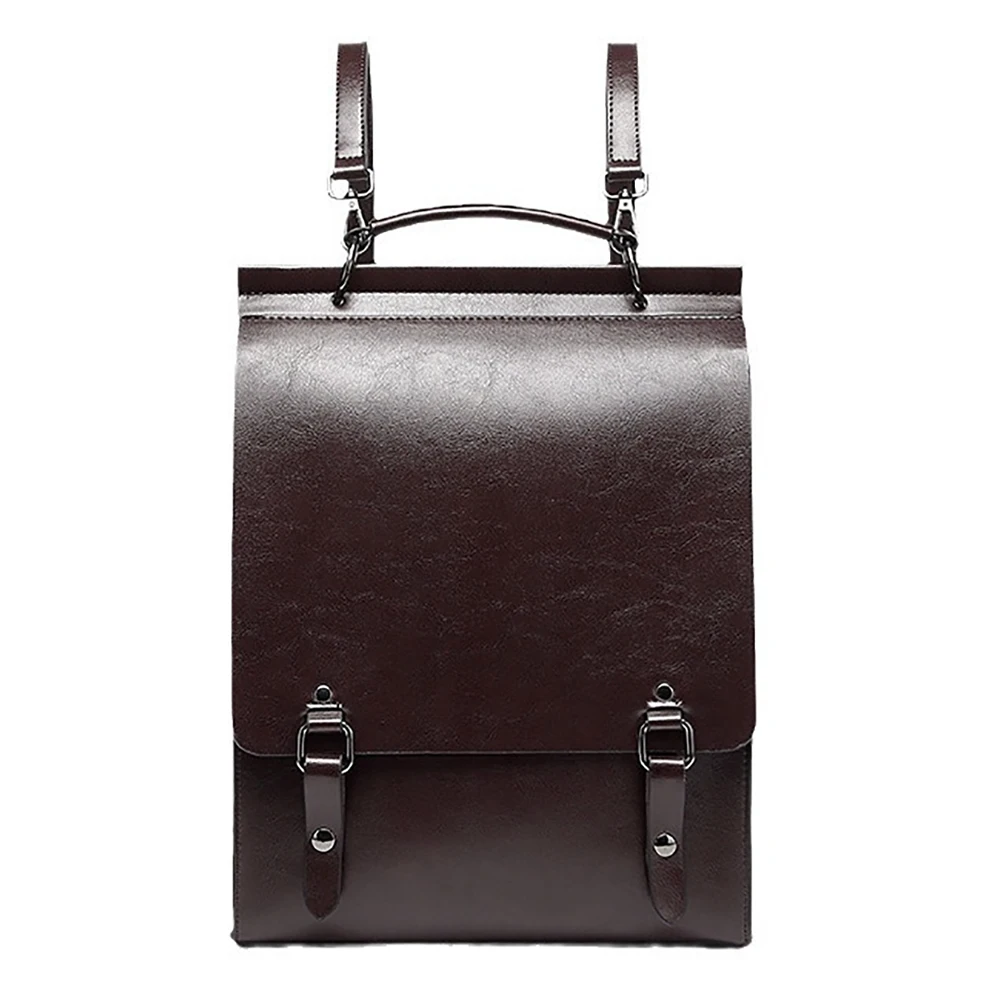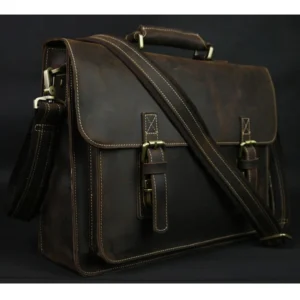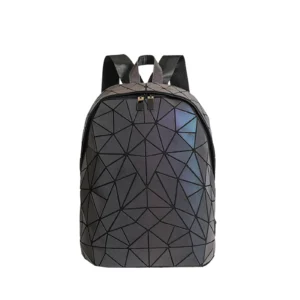1. Introduction: What is Eco-Certified Leather?
Eco-certified leather represents a significant shift in the leather industry, focusing on environmental responsibility without sacrificing quality. At its core, eco-certified leather is animal hide that has been processed using methods specifically designed to reduce environmental impact while maintaining the natural qualities that make leather desirable.
Unlike synthetic alternatives such as “vegan leather” or “faux leather” (which are typically made from plastic-based materials), eco-certified leather is genuine animal hide that has undergone a certification process verifying its sustainable production methods. This certification ensures the leather meets specific environmental standards across its production lifecycle.
The demand for sustainable materials in fashion and accessories continues to grow as consumers become increasingly aware of environmental concerns. The traditional leather industry has faced criticism for:
- Heavy water consumption (up to 40 gallons per pound of finished leather)
- Chemical-intensive processes that can pollute waterways
- Significant carbon footprint from livestock and processing
- Waste generation throughout production
This growing awareness has driven the development of eco-certification systems that verify improvements in these areas. Global demand for sustainable leather options has increased by approximately 25% in recent years, reflecting shifting consumer priorities toward environmentally responsible products.
For those interested in proper maintenance of these premium materials, understanding leather conditioning and waterproofing techniques can help extend the life of eco-certified leather products significantly.
2. Key Benefits of Choosing Eco-Certified Leather
Environmental Impact Reduction
Eco-certified leather offers substantial environmental advantages over conventionally processed leather:
- Water Conservation: Leather Working Group (LWG) certified tanneries typically reduce water usage by 30-50% compared to non-certified facilities. Advanced tanneries can recycle up to 95% of process water, dramatically reducing freshwater consumption.
- Chemical Reduction: Eco-certified processes minimize or eliminate harmful substances like chromium VI, formaldehyde, pentachlorophenol, and certain azo dyes that can contaminate water systems and pose health risks.
- Waste Management: Certified tanneries implement comprehensive waste recovery systems, converting byproducts into usable materials rather than sending them to landfills. Some facilities transform waste into biogas or fertilizer, creating circular systems.
- Carbon Footprint: While still animal-derived, eco-certified leather processing generates approximately 35% less carbon emissions than conventional methods through energy-efficient equipment and optimized processes.
Product Quality Advantages
Beyond environmental benefits, eco-certified leather often delivers superior product qualities:
- Enhanced Durability: With less harsh chemicals used in processing, the natural collagen fiber structure remains more intact, resulting in leather that can last decades with proper care.
- Natural Aging Characteristics: Eco-certified leathers, particularly vegetable-tanned varieties, develop a rich patina over time that enhances rather than degrades appearance.
- Healthier Materials: Reduced chemical residue means fewer potential irritants against skin, making these leathers ideal for items in regular contact with skin.
Ethical Considerations
Eco-certification increasingly includes ethical standards:
- Animal Welfare: Many certification systems now include requirements for humane animal treatment in leather sourcing.
- Worker Safety: Certified facilities must maintain safer working conditions with proper ventilation, protective equipment, and reduced exposure to harmful chemicals.
- Transparency: Supply chain documentation requirements create accountability throughout the production process.
For those looking to maintain their eco-leather products, proper conditioning techniques for leather backpacks can significantly extend product lifespan, further enhancing sustainability through longevity.
3. Major Eco-Leather Certifications and Their Standards
Understanding the different certifications helps consumers make informed choices when selecting eco-certified leather products. Each certification focuses on specific aspects of sustainability:
Leather Working Group (LWG)
- Focus Areas: Environmental management, energy consumption, water usage, waste management, air emissions, chemical management
- Audit Process: Independent assessment with medal ratings (Gold, Silver, Bronze) based on compliance level
- Industry Recognition: Most widely recognized global standard with over 1,300 certified members across 50+ countries
- Consumer Significance: Gold-rated tanneries achieve 48% lower carbon footprint than non-certified facilities
OEKO-TEX Leather Standard
- Focus Areas: Testing for harmful substances, chemical safety, human-ecological requirements
- Audit Process: Laboratory testing of materials against restricted substance lists
- Industry Recognition: Strong consumer recognition, particularly in European markets
- Consumer Significance: Guarantees leather is safe for human contact, with special categories for infant products
ICEC (Institute of Quality Certification for Leather)
- Focus Areas: Environmental performance, product quality, social accountability, traceability
- Audit Process: Multi-factor assessment of entire production chain
- Industry Recognition: European-based with growing international acceptance
- Consumer Significance: Emphasizes full traceability from farm to finished product
ZDHC (Zero Discharge of Hazardous Chemicals)
- Focus Areas: Chemical management, wastewater quality, reduction of hazardous substances
- Audit Process: Evaluates adherence to Manufacturing Restricted Substances List (MRSL)
- Industry Recognition: Growing adoption, particularly for chemical suppliers and tanneries
- Consumer Significance: Ensures water leaving tanneries meets strict purification standards
Sustainable Leather Foundation (SLF)
- Focus Areas: Comprehensive assessment including environmental, social, governance
- Audit Process: Holistic audit with transparency reporting
- Industry Recognition: Newer certification gaining industry acceptance
- Consumer Significance: Provides detailed sustainability metrics through online transparency dashboard
These certifications cover approximately 30% of global leather production, though this percentage continues to grow as more manufacturers recognize the importance of verifiable sustainability claims.
Understanding the ethical considerations behind your leather products can help inform better purchasing decisions. More details about ethically sourced leather backpack materials can provide valuable context for conscientious consumers.
4. Vegetable-Tanned Leather: The Traditional Eco-Option
Vegetable tanning represents one of humanity’s oldest industrial processes, dating back thousands of years. This traditional method uses tannins extracted from plant materials to convert raw animal hides into durable, usable leather.
The Vegetable Tanning Process
Unlike modern chemical tanning that can be completed in days, vegetable tanning requires patience:
- Hides are submerged in increasingly concentrated natural tannin baths
- Processing time typically ranges from 1-2 months (compared to 1-2 days for chrome tanning)
- Tannins gradually bind to collagen fibers, stabilizing the hide structure
- Natural color develops from the specific plant materials used
Environmental Benefits
Vegetable-tanned leather offers several key environmental advantages:
- Biodegradability: Naturally decomposes at end-of-life (within 50 years compared to 100+ for chrome-tanned)
- Renewable Tanning Agents: Sources include sustainable tree bark, leaves, and fruits
- Non-toxic Process: Free from chromium, heavy metals, and synthetic chemicals
- Lower Acute Toxicity: Wastewater from vegetable tanning contains biodegradable compounds
Aesthetic and Functional Characteristics
The unique properties of vegetable-tanned leather make it particularly suited for certain applications:
- Initially firm but becomes more supple with use and age
- Develops rich patina and darkens beautifully over time
- Features a distinctive natural smell rather than chemical odors
- Excellent for tooling, stamping, and carving applications
- Highly heat-resistant (can be formed using just hot water)
Common sources for vegetable tannins include oak, chestnut, mimosa bark, quebracho wood, and sumac leaves, each imparting slightly different characteristics to the finished leather.
For those seeking quality leather goods, full-grain leather backpacks often feature vegetable-tanned leather for its superior aging characteristics and natural beauty.
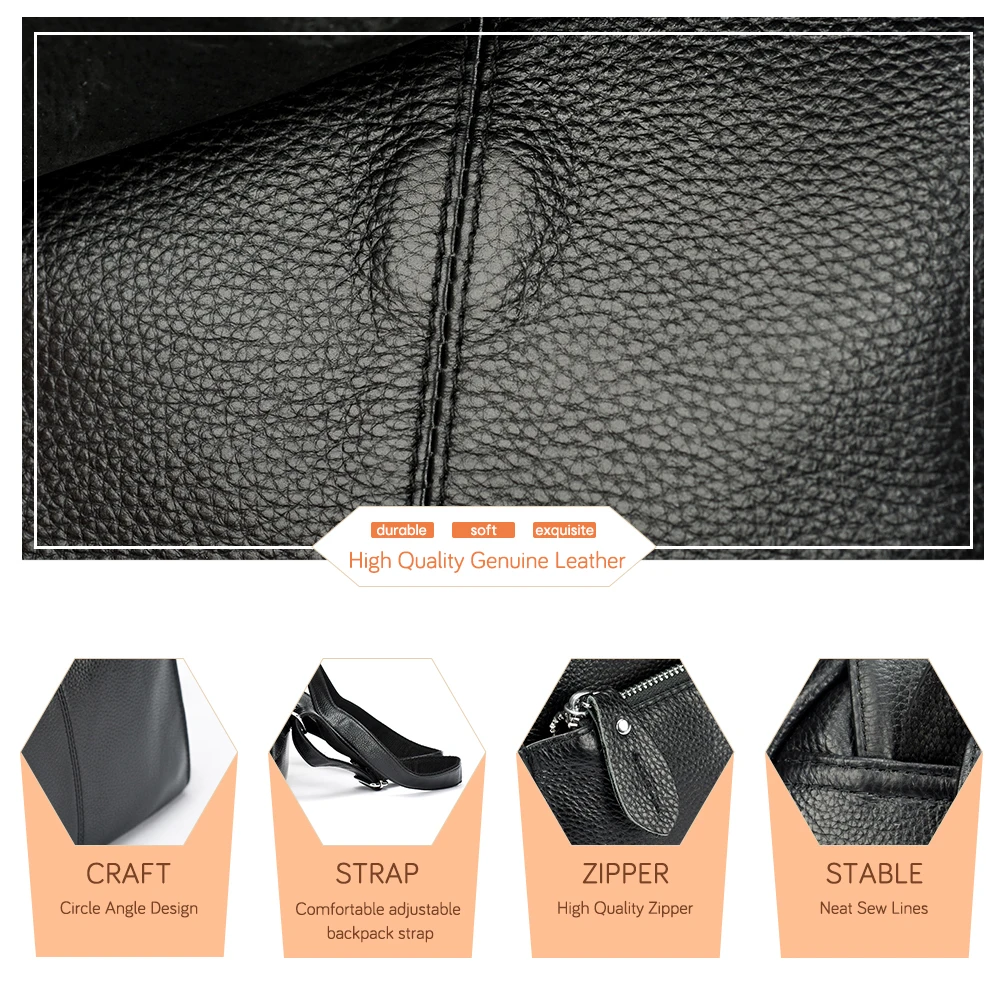
5. Chrome-Free and Metal-Free Tanned Leathers
While vegetable tanning represents a traditional eco-friendly approach, modern alternatives to conventional chrome tanning have been developed to combine sustainability with different performance characteristics.
Chrome-Free and Metal-Free Processes
These innovative tanning methods eliminate chromium and other heavy metals while maintaining many qualities consumers expect from modern leather:
- Aldehyde-Based Tanning: Uses glutaraldehyde or modified aldehydes to cross-link collagen fibers
- Synthetic Polymers: Utilizes engineered molecules that bind with collagen
- Titanium-Based Agents: Employs titanium salts as more environmentally friendly metal alternatives
- White Tanning: Combines various non-metal compounds to achieve light-colored leather without chrome
Environmental Advantages
Compared to conventional chrome tanning, these methods offer significant environmental benefits:
- Elimination of Chromium: Removes risk of toxic chromium VI formation and discharge
- Reduced Heavy Metal Pollution: Prevents metal accumulation in soil and water systems
- Better End-of-Life Options: More readily biodegradable or recyclable
- Wastewater Improvement: Easier treatment of effluent without metal contamination
Performance Characteristics
Chrome-free leathers offer different properties from both chrome-tanned and vegetable-tanned options:
- Exceptional softness and flexibility from the first use
- Good heat resistance (though typically less than vegetable-tanned)
- Excellent colorfastness and light stability
- Generally lighter base color allowing for broader dyeing possibilities
- Resistance to shrinkage when wet
These qualities make chrome-free and metal-free leathers particularly well-suited for automotive upholstery, footwear, and fashion accessories where softness and consistent performance are priorities.
Many luxury leather backpacks now incorporate these innovative tanning methods to combine premium feel with environmental responsibility.
6. Bio-Based and Enzymatically Processed Leathers
At the cutting edge of sustainable leather processing, bio-based and enzymatic methods represent the intersection of ancient craftsmanship with biotechnology. These innovative approaches harness natural biological processes to transform hides into leather.
Bio-Based Processing Methods
These advanced techniques utilize biological agents rather than synthetic chemicals:
- Enzyme-Assisted Tanning: Uses specific enzymes to prepare hides and assist tanning agents in penetrating fibers
- Microbial Tanning: Employs beneficial bacteria that naturally produce compounds that stabilize collagen
- Bio-Based Finishing: Replaces petroleum-derived finishes with coatings derived from plant materials
- Collagen Preservation Techniques: Maintains more of the hide’s natural structure through gentler processing
Environmental Advantages
These biotechnology approaches deliver significant sustainability benefits:
- Lower Toxicity: Biological agents break down into harmless compounds
- Enhanced Biodegradability: Final products decompose more readily at end-of-life
- Reduced Energy Requirements: Processing often requires less heat (20-30% energy savings)
- Water Conservation: Some enzymatic processes reduce water needs by up to 40%
Market Status and Future Potential
While still emerging technologies, bio-based leather processing shows promising commercial development:
- Several European tanneries now offer enzymatically pre-treated leathers
- Research institutions in Italy, Germany and Spain lead development
- Early commercial applications show comparable quality to conventional methods
- Production scaling remains a challenge but is advancing rapidly
Maintaining these innovative leathers requires appropriate care products. Learning about leather waterproofing products can help protect your investment while maintaining eco-friendly credentials.
7. Recycled and Upcycled Leather Materials
The leather industry generates significant waste during manufacturing, with up to 30% of hide material typically discarded during cutting and processing. Recycled and upcycled leather approaches transform this potential waste into valuable materials.
Approaches to Leather Recycling
Several methods have been developed to give leather materials a second life:
- Bonded Leather: Ground leather fibers combined with binding agents and pressed into sheets
- Scrap Leather Upcycling: Collecting and repurposing cutting waste into new products
- Post-Consumer Recovery: Reclaiming leather from used goods for new applications
- Pre-Consumer Waste Utilization: Capturing manufacturing offcuts before they become waste
Environmental Benefits
The ecological advantages of recycled leather are significant:
- Waste Diversion: Reduces the approximately 800,000 tons of leather waste entering landfills annually
- Extended Material Lifecycle: Creates value from materials otherwise discarded
- Resource Conservation: Each pound of recycled leather saves approximately 2,000 gallons of water that would be used in new leather production
- Reduced Land Use Impact: Decreases the need for additional livestock raising
Performance Considerations
Recycled leather materials have different characteristics from virgin leather:
- Durability Variations: Bonded leather typically has shorter lifespan than full-grain leather
- Aesthetic Differences: More uniform appearance without natural grain variations
- Application Suitability: Best for structured items rather than those requiring high flexibility
- Finishing Requirements: Often needs additional finishing to achieve water resistance
Recycled leather excels in applications like book bindings, structured bags, furniture components, and decorative panels where its unique properties can be advantageous.
For those interested in traditional leather goods with vintage appeal, mens leather backpacks often combine classic styling with sustainability-minded construction.
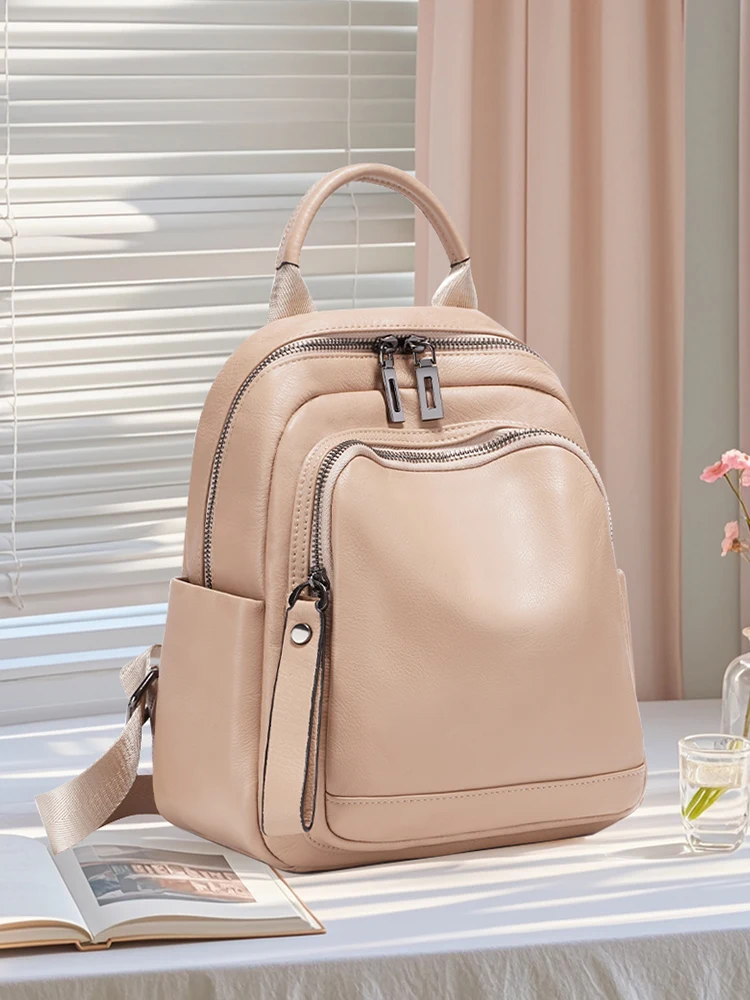
8. Eco-Leather vs. Plant-Based Leather Alternatives
As sustainable material options expand, consumers often wonder how eco-certified animal leather compares to increasingly popular plant-based alternatives. Each material category offers distinct sustainability advantages and limitations.
Comparative Sustainability Metrics
| Aspect | Eco-Certified Leather | Plant-Based Alternatives |
|---|---|---|
| Lifespan | 10-30+ years with proper care | 2-5 years typically |
| Biodegradability | Yes (varies by tanning method) | Varies (some contain non-biodegradable polymers) |
| Resource Use | High water usage, land for livestock | Lower water usage, agricultural land |
| Repair Potential | Excellent – can be restored | Limited – often cannot be repaired |
| Carbon Footprint | Moderate to high (livestock impact) | Lower for most options |
| Chemical Use | Reduced but still present | Varies widely by material |
Notable Plant-Based Alternatives
Several innovative materials are gaining market traction:
- Piñatex: Created from pineapple leaf fibers, a byproduct of existing agriculture
- Mycelium Leather: Grown from mushroom roots into leather-like material
- Cactus Leather: Developed from nopal cactus leaves requiring minimal water
- Apple Leather: Utilizes apple pomace waste from juice industry
- Cork Leather: Harvested sustainably from cork oak trees
Material Choice Considerations
The most sustainable choice depends on specific priorities:
- For maximum durability and longevity: Eco-certified leather typically outlasts alternatives
- For lowest animal impact: Plant-based materials eliminate animal welfare concerns
- For lowest carbon footprint: Some (but not all) plant-based options
- For biodegradability: Vegetable-tanned leather or fully bio-based alternatives (without plastic binders)
An important consideration with plant alternatives is the presence of synthetic binders – many contain polyurethane or other plastics that affect their environmental profile and end-of-life options.
Learning proper DIY leather care for travel backpacks can significantly extend the life of both traditional and alternative materials, improving their lifetime sustainability profile.
9. How to Identify Genuine Eco-Certified Leather
With growing interest in sustainable materials, distinguishing genuinely eco-certified leather from greenwashing claims requires careful evaluation. Here’s how to verify eco-leather authenticity:
Visual Identification Methods
Look for specific indicators that signal genuine certification:
- Certification Logos: Authentic LWG, OEKO-TEX, or ICEC stamps on tags or packaging
- QR Codes: Scannable codes linking to verification databases
- Certificate Numbers: Unique identifiers that can be verified on certification websites
- Physical Characteristics: Vegetable-tanned leather often has visible natural markings and a distinctive earthy smell
Questions to Ask Retailers
When purchasing supposedly eco-certified leather, inquire about:
- “Which specific environmental certifications does this leather carry?”
- “Can you provide documentation of these certifications?”
- “Where was the leather tanned and what standards does that tannery follow?”
- “What makes the tanning process more environmentally friendly than conventional methods?”
Avoiding Greenwashing
Be alert for common misleading tactics:
- Vague terms like “eco-friendly” or “natural” without specific certifications
- Focus on single attributes while ignoring overall environmental impact
- Certification-like logos that aren’t from recognized organizations
- Claims of biodegradability without specifying timeframe or conditions
Verification Resources
Utilize these tools to confirm certification claims:
- Official certification body websites with searchable databases
- LWG Supplier Lookup tool for verified tanneries
- OEKO-TEX Label Check online verification system
- Brand sustainability reports with specific leather sourcing information
While eco-certified leather typically costs 10-30% more than conventional leather, this premium reflects real improvements in environmental processing and ensures certification legitimacy.
For business professionals seeking sustainable options, leather briefcase backpacks combining professionalism with environmental responsibility offer a compelling choice.
10. Summit Carry’s Approach to Eco-Certified Leather
At Summit Carry, we believe that sustainability and premium quality are complementary rather than competing values. Our approach to eco-certified leather centers on thoughtful material selection and longevity-focused design.
Our Leather Sourcing Philosophy
Summit Carry prioritizes working with tanneries that maintain rigorous environmental certifications while producing exceptional leather that meets our performance requirements. We focus on:
- Partnering with LWG Gold and Silver-rated tanneries
- Selecting vegetable-tanned leathers for products where their unique properties enhance performance
- Incorporating chrome-free options for applications requiring particular flexibility
Balancing Sustainability with Performance
We recognize that true sustainability comes not just from eco-friendly processing but also from creating products that last for years rather than seasons. Our approach includes:
- Selecting full-grain leather that maintains natural strength fibers
- Engineering designs that accommodate leather’s natural aging process
- Testing materials for durability under real-world conditions
- Prioritizing classic designs that transcend fashion trends
Product Lifecycle Approach
Summit Carry views each product’s entire lifecycle as critical to its sustainability profile:
- Designing products for potential repair rather than replacement
- Creating constructions that allow leather to develop character with age
- Educating customers on proper care techniques to extend product life
- Using materials that improve rather than degrade with proper use
By focusing on both responsible sourcing and exceptional durability, Summit Carry creates leather goods that represent a more sustainable approach to luxury.
Our leather travel backpacks exemplify this philosophy of responsible materials combined with longevity-focused design.
11. Is Eco-Certified Leather Truly Sustainable? (Contextual Bridge)
While eco-certified leather represents a significant improvement over conventional processing, it’s important to consider its overall sustainability within a broader context. This balanced assessment helps consumers make informed choices aligned with their values.
Remaining Environmental Challenges
Despite improvements, eco-certified leather still faces sustainability hurdles:
Q: Does livestock raising for leather remain land-intensive?
A: Yes. While leather is often a byproduct of meat production, raising cattle requires substantial land resources – approximately 2 acres per cow. However, using hides that would otherwise be wasted maximizes resource efficiency from existing livestock.
Q: Is water usage still a concern with eco-leather?
A: Even optimized processes require significant water. LWG-certified facilities use 30-50% less water than non-certified operations, but leather production remains more water-intensive than many synthetic or plant-based alternatives.
Q: What about energy requirements?
A: Leather processing demands considerable energy for drying and processing steps. While certified facilities implement efficiency measures, the total energy footprint exceeds most alternatives.
Lifecycle Perspective
A full lifecycle view reveals important nuances:
Q: How does the longevity of leather affect its overall sustainability?
A: Quality leather products often last decades rather than years, spreading environmental impact over a much longer useful life. A leather bag lasting 20 years may ultimately have less impact than 5-7 synthetic bags purchased during the same period.
Q: Can eco-leather be part of a circular economy?
A: Vegetable-tanned leather biodegrades at end-of-life, while chrome-tanned varieties can be recycled into bonded leather, though current recycling infrastructure remains limited.
The most sustainable choice ultimately depends on individual priorities, use case, and care practices. For many applications, properly cared for eco-certified leather represents a responsible choice when longevity is prioritized.
Understanding complete waterproofing techniques for leather bags can significantly extend product life, enhancing the sustainability profile of leather goods.
14 Inch Leather Laptop Backpack, Brown Leather Backpack, Men's Leather Backpack, Vintage Leather Backpack
Price range: $177.28 through $199.12 Select options This product has multiple variants. The options may be chosen on the product pageCarry On Leather Backpack, Roll Top Leather Backpack
Price range: $77.76 through $96.48 Select options This product has multiple variants. The options may be chosen on the product page15 Inch Leather Laptop Backpack, Leather Briefcase Backpack
$332.96 Select options This product has multiple variants. The options may be chosen on the product page17 Inch Leather Laptop Backpack, Men's Leather Travel Backpack, Men's Leather Work Backpack
Price range: $106.28 through $143.88 Select options This product has multiple variants. The options may be chosen on the product pageLuxury Leather Backpack, Small Leather Backpack, Women's Leather Backpack
Price range: $137.48 through $138.28 Select options This product has multiple variants. The options may be chosen on the product pageDesigner Women's Backpack, Luxury Leather Backpack
Holographic Geometric Laser Diamond PU Leather Women’s Fashion Backpack with Glow-in-the-Dark Design$112.20 Select options This product has multiple variants. The options may be chosen on the product page
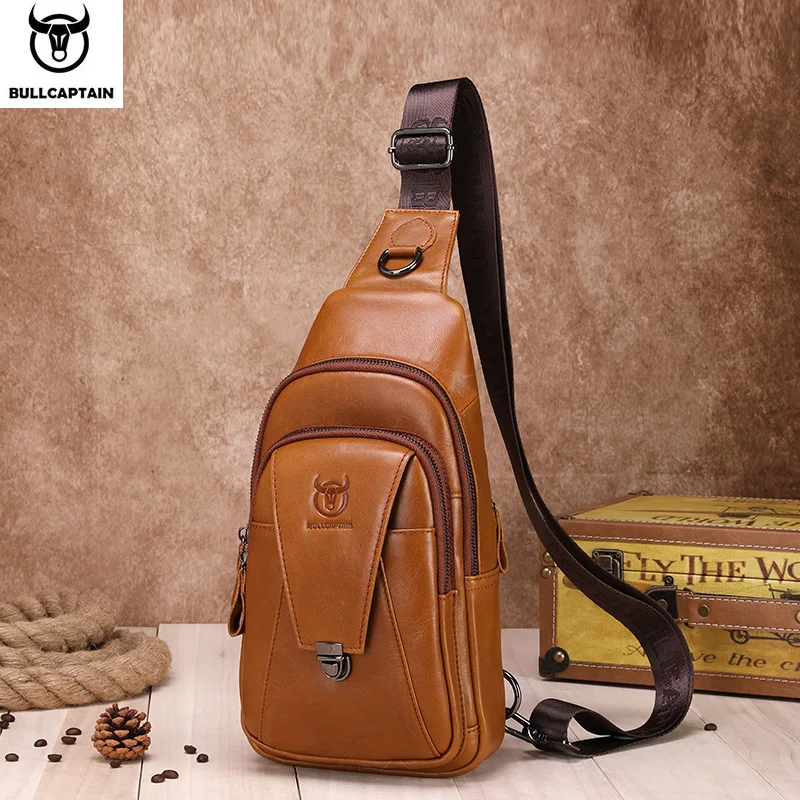
12. Care and Maintenance of Eco-Certified Leather Products
Proper care not only extends the life of eco-certified leather goods but also honors the sustainable practices used in their creation. Different eco-leather types require slightly different maintenance approaches.
Care Considerations for Eco-Certified Leathers
- Cleaning Guidelines
- Use mild, natural soaps free from harsh detergents
- Test cleaning products on an inconspicuous area first
- Wipe gently with damp cloth rather than soaking
Allow to dry naturally away from direct heat sources
Conditioning Recommendations
- Apply natural conditioners containing beeswax, lanolin, or plant oils
- Condition vegetable-tanned leather more frequently (3-4 times yearly)
- Use lighter conditioning for chrome-free leathers (1-2 times yearly)
Focus on flex points that experience the most stress
Storage Best Practices
- Store in breathable cotton bags rather than plastic
- Maintain shape with appropriate stuffing if storing long-term
- Keep away from sustained direct sunlight to prevent fading
- Maintain moderate humidity to prevent drying or mildew
Material-Specific Guidance
Vegetable-tanned leather benefits from regular conditioning to prevent drying and cracking, while chrome-free leathers often need less frequent maintenance. For all eco-leathers, avoiding petroleum-based products helps maintain their environmental integrity.
With proper care, quality eco-certified leather develops an attractive patina that enhances rather than degrades its appearance. This aging process – where the leather becomes more supple and develops rich color variations – represents a unique advantage of natural materials.
A well-maintained eco-leather product can last 20+ years, significantly extending its sustainability through longevity. For specific natural maintenance approaches, learning whether oiling leather effectively waterproofs it can help inform your care routine.
13. Frequently Asked Questions About Eco-Certified Leather
Does eco-certified leather cost more than conventional leather?
Yes, eco-certified leather typically costs 10-30% more than conventional leather. This price difference reflects real investments in cleaner processing equipment, third-party certification costs, and often longer production times. However, when considered over the full product lifetime, eco-leather products often provide better value through extended durability and aging characteristics.
Is eco-certified leather waterproof?
Most eco-certified leathers are naturally water-resistant but not completely waterproof. Vegetable-tanned leather initially repels light moisture but requires additional treatment for waterproofing. Chrome-free leathers vary in water resistance depending on their specific finishing process. Natural waxes and oils can enhance water resistance without compromising eco-friendly credentials.
How can I verify if a leather product is truly eco-certified?
Look for specific certification numbers that can be verified on organization websites like the Leather Working Group or OEKO-TEX. Reputable brands will provide certification details upon request. Be wary of vague environmental claims without specific certification references or documentation.
Can eco-certified leather be dyed in bright colors?
Vegetable-tanned leather has some color limitations, typically producing earth tones and rich browns. Chrome-free leathers generally accept a wider color range. Many eco-tanneries now use low-impact dyes certified by GOTS (Global Organic Textile Standard) or BlueSign to maintain environmental standards while offering diverse color options.
How does eco-certified leather compare to synthetic alternatives in durability?
Quality eco-certified leather significantly outperforms most synthetic alternatives in longevity, often lasting 5-10 times longer with proper care. While synthetic materials may maintain their appearance initially, they typically show wear more quickly and cannot be effectively repaired once damaged, unlike leather which can often be restored.
Are there different grades of eco-certified leather?
Yes, eco-certified leather comes in various grades like full-grain, top-grain, and split leather. Full-grain represents the highest quality with the entire natural grain intact, offering maximum durability. The certification refers to the environmental processing methods rather than the grade of leather itself.
Products featuring traditional craftsmanship methods like those found in our vintage leather backpack collection often utilize eco-friendly processes that have stood the test of time.
14. The Future of Eco-Certified Leather Innovation
The leather industry continues to evolve toward greater sustainability through both technological innovation and renewed appreciation for traditional methods. Several promising developments are shaping the future of eco-certified leather.
Emerging Sustainable Technologies
Innovative approaches are addressing leather’s remaining environmental challenges:
- Advanced Waste Recovery Systems: New processes convert tannery waste into biogas, fertilizer, and construction materials, approaching zero-waste operations
- Closed-Loop Water Processing: Systems that recycle up to 98% of process water, dramatically reducing freshwater consumption
- Energy-Efficient Operations: Solar-powered tanneries and heat recovery systems significantly reducing carbon footprints
- Near-Waterless Processing: Experimental techniques reducing water requirements by up to 70% through mechanical processes and foam-based chemical application
Evolving Certification Landscape
Certification systems are becoming more comprehensive and transparent:
- Integration of animal welfare standards into environmental certifications
- Blockchain-based traceability systems providing complete supply chain verification
- Carbon footprint measurements becoming standard certification components
- Harmonization between different certification systems reducing confusion
Consumer-Driven Industry Changes
Market forces continue to accelerate sustainable leather development:
- Growing premium market segment willing to pay for verified sustainable materials
- Increased demand for transparency driving improved production practices
- Brand commitments to science-based environmental targets
- Collaboration between luxury brands and tanneries to develop exclusive eco-processes
Balancing Tradition and Innovation
The most promising developments often combine ancient wisdom with modern science:
- Revival of historical tanning methods enhanced by precise modern control
- Biomimicry approaches learning from natural processes
- Combining traditional craftsmanship with innovative materials
- Respecting the cultural heritage of leatherworking while embracing sustainability
As these innovations continue, eco-certified leather is positioned to remain a premium sustainable material option for those who value both environmental responsibility and exceptional product quality.
